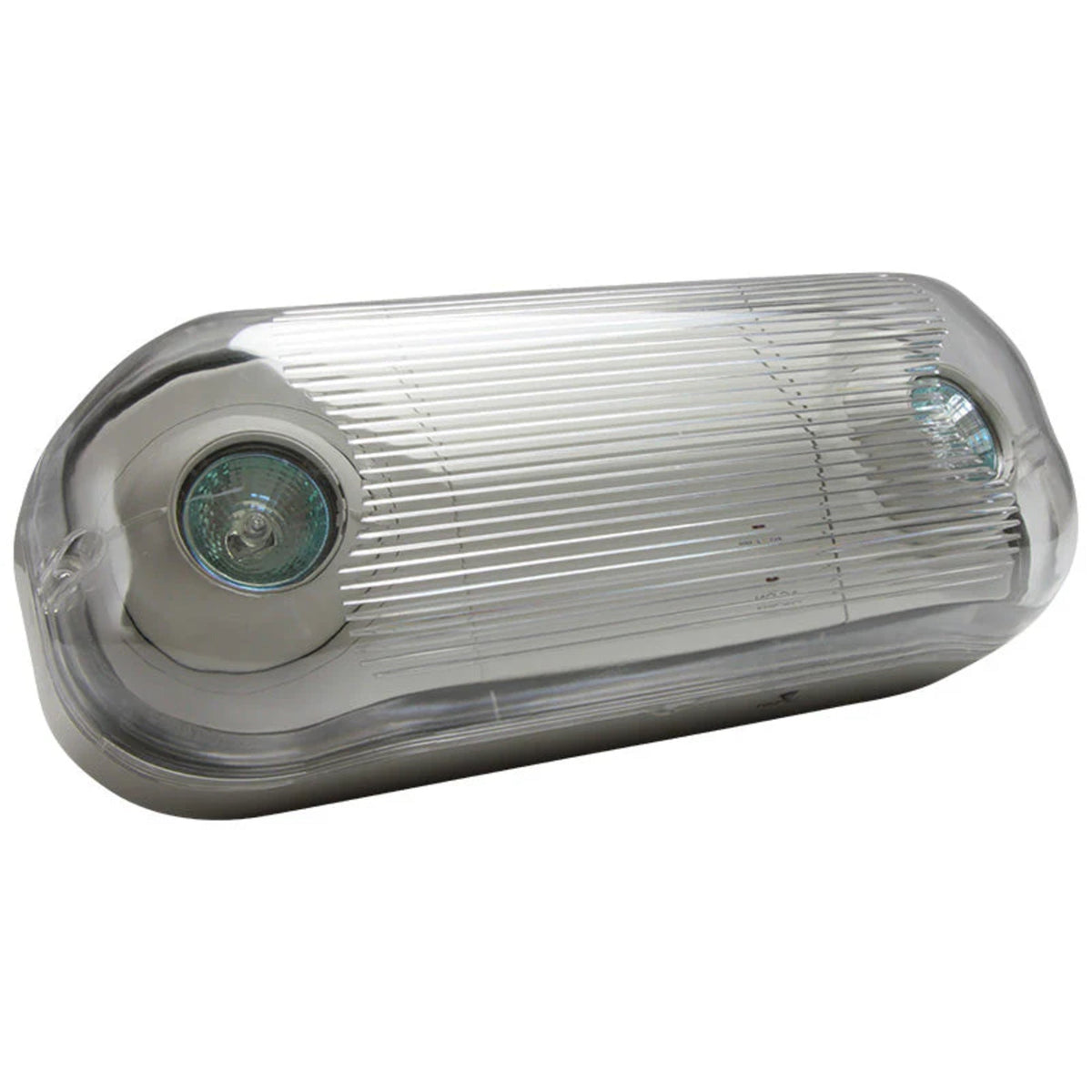
51 Products
-

Wet-Location Semi-Recessed LED MR16 Emergency Unit
Assembled in the USABattery BackupCold WeatherDamp LocationHigh LumenLEDRecessedSelf TestingThermoplasticWall MountWet Location -

Compact LED Emergency Lighting for Damp Locations
Assembled in the USABattery BackupCeiling MountDamp LocationHigh LumenLEDLow ProfileSelf TestingThermoplasticWall Mount -

Dual Head High-Output Industrial Emergency Unit
Battery BackupDamp LocationLEDRemote CapableThermoplasticWall Mount -

Semi-Recessed MR-16 LED Emergency Lighting Unit
ArchitecturalAssembled in the USABattery BackupDamp LocationHigh LumenLEDRecessedSelf TestingThermoplasticWall Mount -

High-Performance LED Emergency Light – Long Spacing, Remote-Capable
Battery BackupCeiling MountDamp LocationLEDRemote CapableSelf TestingThermoplasticWall Mount -

Compact Steel Emergency Lighting Unit – PAR18 Dual-Head, NYC Approved - Voltage: 12-Volt-Lead-Calcium
Battery BackupDamp LocationLEDRemote CapableSelf TestingSteelWall Mount -

Industrial Outdoor Emergency Light – Remote Capacity
Battery BackupDamp LocationLEDRemote CapableThermoplasticWall Mount -

Dual-head LED Emergency Lighting with Remote Capacity
Assembled in the USABattery BackupCeiling MountDamp LocationHigh LumenLEDRemote CapableSelf TestingThermoplasticWall Mount -

Wet-Location LED Emergency Light – 3.7W Remote Option, IP Rated
Cold WeatherDamp LocationLEDRemote CapableThermoplasticWall MountWet Location -

Die-Cast Outdoor LED Egress Emergency Light - Low Profile
ArchitecturalBattery BackupCeiling MountCold WeatherDamp LocationDie-Cast AluminumLEDLow ProfileSelf TestingWall MountWet Location -

High-Capacity Emergency Light – Dual MR16 Heads, Remote-Ready
Battery BackupDamp LocationRemote CapableSelf TestingThermoplasticWall Mount -

Flush-Mount LED Emergency Light – Adjustable Dual Head, Concealed Hinged Doors
ArchitecturalBattery BackupCeiling MountCold WeatherDamp LocationLEDRecessedSelf TestingSteelVandal ProofWall Mount














